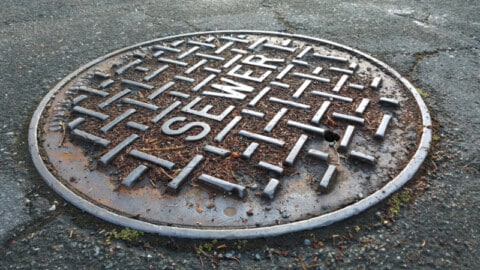The Queensland Government’s State Budget has allocated $19 billion over four years to deliver on the Queensland Energy and Jobs Plan, and more than $1.7 billion is locked in for water infrastructure and planning.
Queensland Premier, Anastacia Palaszczuk, said this budget empowers publicly owned energy entities to drive Queensland forward toward more affordable and more reliable renewable energy.
“It represents the most significant investment ever in Queensland’s publicly owned electricity system and will help us power Queensland with 70 per cent renewable energy by 2032 and 80 per cent by 2035.
“2023’s capital program positions our publicly owned energy entities to lead the clean energy era and support thousands of jobs.
“It empowers them to work with industry to seize every opportunity from the renewable energy boom to create skilled jobs and power new mining and manufacturing industries.”
Publicly-owned energy businesses are set to be supported by the $4.5 billion Queensland Renewable Energy and Hydrogen Jobs Fund.
In 2023–24 alone, the state’s six publicly owned energy entities are making a capital commitment of $5.465 billion, significantly strengthening their capability to lead the sector’s transition to cleaner sources of supply.
In the north, a further $440 million, on top of the $100 million already committed, is locked in to progress the upgrade and raising of the state’s largest water storage asset, Burdekin Falls Dam.
Raising the dam by two metres will future-proof Queensland’s largest dam by providing up to 150,000ML of new water allocations, locking in water for agricultural irrigation, groundwater recharge, aquifer management, and supplementing urban use, while powering industries and jobs in North Queensland.
This budget ensures the Paradise Dam Improvement Project will progress, providing $116.4 million to continue pre-construction activities prior to major construction works commencing late 2024.
This work will deliver long-term water security for the Bundaberg region by restoring the dam’s capacity and improving the dam’s resilience against major and extreme weather events.
“We know water is a precious and vital resource and this budget is further proof of our commitment to water protection and security,” Ms Palaszczuk said.
“In the Wide-Bay, Central Queensland and Southern Downs we’ve funded the next steps in major infrastructure that will provide long-term security for regional Queensland.
In Central Queensland, the Queensland Government is increasing the investment in Rookwood Weir to $568.9 million with $156.7 million to be spent in 2023.
This increased investment is intended to keep the project on track for construction completion by the end of 2023.
Costs have increased due to a range of pressures including six wet weather inundation events, escalating material, workforce and fuel costs, and supply chain issues.
The Queensland and Australian Governments have contributed $183.6 million each to the total spend, and Sunwater is funding the remainder.
A more secure water supply for the Southern Downs is a step closer, with the Toowoomba to Warwick Pipeline project to spend $13.4 million to support pre-construction, which is only part of the more than $300 million commitment to water security in the region.
In addition, Toowoomba Regional Council will receive $15 million over four years to deliver treated water to the communities of Cambooya, Greenmount, Nobby and Clifton.
The Gladstone Area Water Board will spend $548.5 million for the construction of the Fitzroy to Gladstone Pipeline, an important investment in water security recommended by the Bradfield Regional Assessment and Development expert panel, to support better urban water security and new job creating industries coming to Gladstone.
Minister for Regional Development and Manufacturing, Glenn Butcher, said regional Queensland is a big focus of this budget, investing in job creating projects that deliver regional economic development in communities from Maryborough to Mt Isa.
“This budget continues to deliver water security for Queensland, building the infrastructure communities need across the state, and providing secure jobs in the process.
“Jobs in manufacturing are good, secure and well-paid. That’s why this budget continues our manufacturing support programs, ensuring this critical industry continues to create more jobs across Queensland.
“We are prioritising our work with First Nations Peoples, building capacity and ensuring First Nations Peoples are part of decision-making on the allocation and management of water resources.”
As part of the Path to Treaty, the State Government is allocating $11.7 million over three years for a First Nations Water Strategy, for stronger engagement with First Nations communities, and more culturally inclusive water planning.
This follows passing the Path to Treaty Bill earlier this year, where the State Government outlined a firm commitment to build stronger partnerships with First Nations Peoples.
The following 2023–24 energy investments have also been confirmed:
- $1.483 billion for electricity bill support to Queensland households and small businesses facing cost of living pressures, as outlined in the Cost of Living relief rebates
- Build-out of new backbone transmission and storage infrastructure to boost capacity of the state’s new SuperGrid, cornerstone investments of the Queensland Energy and Jobs Plan announced in September 2022
- Powerlink will invest $594 million to kick-start the CopperString 2032 high voltage link that will unlock billions of dollars of new critical minerals mining in the North West Minerals Province and significant new renewables around Hughenden
- Powerlink will also invest $193.8 million to support the connection of major renewable projects to the grid, including the proposed 2GW Borumba pumped hydro energy storage and Australia’s largest onshore wind project, the 1GW MacIntyre Wind Precinct south-west of Warwick
- Energy Queensland’s $2.042 billion capital program is also focused on network reliability and renewable hosting capability and includes $150 million to continue the roll-out of network batteries, decarbonise isolated networks, and support renewable generation across Queensland, as well as $99.9 million for network replacement in the Mackay region
- Stanwell Corporation will invest a further $221.2 million towards the development of the 252MW Wambo Wind Farm and $200 million to commence construction of its Tarong West Wind Farm, as well as $251.8 million for new grid-scale batteries within Queensland’s southern and central Renewable Energy Zone regions
- CleanCo will continue to grow its renewable portfolio with a $171 million down-payment on the $500 million announced to support the development phase of new wind and solar projects in Central Queensland, as well as $41.5 million to build and install a 250MW big battery at Swanbank Power Precinct near Ipswich, which is transitioning into a Clean Energy Hub with the potential for onsite solar and green hydrogen production facilities
- Queensland’s three publicly-owned generators are together investing around $384 million for upgrades and maintenance at existing state-owned power stations, safeguarding supply while renewable generation ramps up
- Queensland Hydro will invest $183.7 million to progress the 2GW Borumba Pumped Hydro Energy Storage project near Gympie, at the same time as undertaking the detailed feasibility study into the Pioneer-Burdekin Pumped Hydro Energy Storage project west of Mackay
Minister for Energy, Renewables and Hydrogen, Mick de Brenni, said the Queensland Energy and Jobs Plan is both bold and achievable.
“Only Queensland has such a comprehensive, detailed plan to transition its energy system in a way that creates 100,000 jobs, delivers job security to energy workers and slashes emissions.
“Whether it’s in hydrogen, batteries, wind, solar, hydro, traditional generation, transmission, distribution or most importantly Queenslanders themselves, this Budget invests to ensure the Plan delivers on our target of 70 per cent renewable energy by 2032.”
The following water supply investments have also been confirmed:
- $2.6 million for an Urban Water Risk Assessment to better understand drinking water and water security risks across regional and remote communities, working with water service providers, local governments and other Queensland Government agencies
- $8 million over two years has been allocated for a detailed assessment of the water requirements for the hydrogen industry in Gladstone
- $22.8 million to continue the 15 per cent irrigation price discount
- $7 million for Cloncurry’s water supply through the Community Service Obligation
- $10.8 million as part of Queensland’s $40.4 million contribution to the Mount Morgan Pipeline
- $300,000 to the State Council of River Trusts to continue to support the important work of River Improvement Trusts across Queensland
Queenslanders are also set to benefit from public ownership of their energy system with the 2023–24 Budget delivering the largest cost-of-living relief package in the nation.
The Queensland Government revealed the 2023–24 Cost of Living Rebate will be more than three times the size of the previous year’s rebate.
All Queensland households will automatically receive the rebate and, as a result, will have the lowest effective power bills in the national electricity market.
Elderly and the most vulnerable Queenslanders will get the greatest relief, receiving total support of $1,072 per household including a $700 cost of living rebate – partly funded with the Commonwealth under the National Energy Bill Relief Fund – and $372 through Queensland’s existing Electricity Rebate Scheme.
All remaining households will automatically receive a $550 rebate on their electricity bill in 2023‑-24.
At a time when electricity bill increases are being seen across Australia and the rest of the world, these rebates will fully offset typical Queensland household electricity bill increases.
Small businesses will also benefit, with about 205,000 eligible small businesses receiving a $650 rebate on electricity bills in 2023-24 to cut the cost of doing business in Queensland, plus $35 million for the Queensland Business Energy Saving and Transformation Program, which includes targeted support for agriculture to enable advice and contribution to energy efficiency measures and infrastructure.
The budget also allocates $70 million over two years to deliver energy efficiency measures and advice to tens of thousands of eligible Queensland households to directly support energy efficient appliances and household batteries, keeping costs down for households, enabling more choice and greater energy equity.
















